Over the ebb and flow of time, the Vietnamese language has accumulated layers of richness and beauty in each tone and character. This richness, at times, becomes a challenge for Vietnamese language translation, as it seems daunting to faithfully convey the spirit of this language.
Is it because of this that translation remains an ongoing journey of exploration and deciphering the enchantment of Vietnamese? And during that journey, what are the difficulties and how did Vietnamese translation overcome those difficulties?
This article attempts to unveil all the secrets of this journey in decoding the richness of the Vietnamese language in translation.
To fully appreciate the richness and beauty of the language, delving into the origins of Vietnamese language – the original clues – is an essential first step.
The origin of the Vietnamese language remains a subject of debate to date. Due to numerous similarities with the Chinese language in terms of lexical systems and phonological rules, some linguists argue that Vietnamese originated from Chinese. In his Vietnamese-Latin dictionary, author Jean-Louis Taberd proposed that Vietnamese is an offshoot of the Chinese linguistic system.
In contrast, distinguished linguists like André-Georges Haudricourt (1953), Sergei E. Yakhontov (1973), and Michel Ferlus (2001) maintain that Vietnamese is a cornerstone of the Proto-Viet-Muong branch within the Mon-Khmer language family of Southeast Asia. This language evolved and refined over time, developing distinctive characteristics.
Emerging around the 10th century, the Nom script marked the birth of the first writing system for the Vietnamese language, a testament to the resilience of the Vietnamese people in safeguarding their cultural identity amidst the pervasive influence of Chinese culture. It wasn’t until the 16th and 17th centuries, under the efforts of Catholic missionaries like Francisco de Pina, Gaspar do Amara, and António Barbosa, that the Romanization of Vietnamese took place.
The culmination of this effort was Alexandre de Rhodes‘ groundbreaking dictionary, Dictionarium Annamiticum Lusitanum et Latinum, a trilingual Vietnamese-Portuguese-Latin dictionary, building upon the pioneering work of his predecessors.
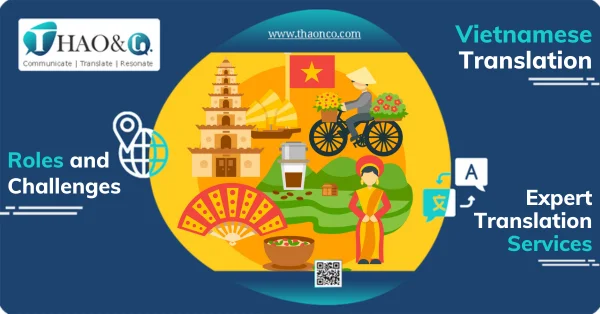
Navigating the tumultuous tides of history, the Latin alphabet officially became the national script of the Vietnamese people, meticulously crafted over time to embody the nation’s unique essence and cultural richness.
Professor and eminent cultural figure Dang Thai Mai once remarked that Vietnamese possesses the qualities of a beautiful and refined language, brimming with imagery, musicality, and expressiveness. Peeling back the intricate layers of the language is the best way to fully understand and embrace the richness of the Vietnamese language.
A Vietnamese folk adage aptly captures the complexities of the language: “The struggles of enduring a violent storm are but a whisper compared to the trials of mastering Vietnamese grammar.” But is this really true?
Regarding the factors of tense and aspect in Vietnamese, there are two different perspectives. In the book “Introduction to Spoken Vietnamese,” authors R. B. Jones and Huynh Sanh Thong argue that the majority of Vietnamese verbs lack tense inflection. Instead, tense is conveyed through two primary mechanisms: clause structure and auxiliary verbs.
In contrast, another view posits that Vietnamese does exhibit tense and aspect markers. Prominent scholar Truong Vinh Ky advocates for the existence of tense and aspect in Vietnamese. He identified tense and aspect in Vietnamese through grammatical elements such as affixes, functional words, and clauses. According to him, Vietnamese distinguishes between basic tense (đang, đã, sẽ) and derivative tense (khi ấy, có, rồi, đoạn, vừa khi… rồi, thì đã… trước đi rồi, sẽ, đã, thì sẽ, thì sẽ đã).
While debates persist about tense and aspect, this has added to the mysterious beauty of Vietnamese, prompting many to embark on the journey of deciphering this beauty.
French is known as a “fixed” language, where each word carries a specific meaning and designated function within the sentence structure. The form of a sentence can vary depending on its function. On the other hand, Vietnamese is a “non-flexible” language, where words retain their form regardless of their grammatical function within the sentence.
A typical example is the French word “étudiant,” which can refer to students in general or a male student, while “étudiante” is specifically used for a female student. Although both are nouns, their usage in French is determined by the gender of the person being referred to. However, in Vietnamese, the term “sinh viên” (student) can be used for both male and female students without gender distinction. Certainly, determining whether it’s a male or female student in this case is not easy; the translator needs a deep understanding of the context to make the appropriate choice of word.
A distinctive feature of Vietnamese grammar is that Vietnamese speakers place significant emphasis on both word order and functional words to ensure precise and nuanced communication. A shift in word order can fundamentally alter the meaning of a Vietnamese sentence. This grammatical feature, while essential for precise communication in Vietnamese, also presents significant hurdles in Vietnamese translation. This demands translators to have a profound understanding of vocabulary, word order, and cultural context sensitivity.
Another manifestation of the beauty of Vietnamese is its remarkably diverse and expansive vocabulary. The fundamental building blocks of Vietnamese are monosyllabic words. According to Assoc. Prof. Pham Van Tinh, Vietnamese currently boasts over 17,000 syllables, indicating that the minimum vocabulary of 17,000 words. The Vietnamese people skillfully combine these syllables to form a vast array of words, resulting in millions of possible combinations.
Thereby, it can be seen that Vietnamese vocabulary has great flexibility in usage, allowing for the effortless creation of new words. The flexibility and abundance of Vietnamese vocabulary contribute to its remarkable diversity and versatility. A single phenomenon can be expressed in myriad ways, each conveying a unique emotional nuance.
The flexibility of Vietnamese vocabulary enables precise and nuanced communication, effectively conveying both information and emotional subtleties. However, if the disparity in vocabulary between Vietnamese and the target language is too large, capturing the “essence” of the original Vietnamese text poses a formidable challenge for translators.
Tone is a distinctive feature that shapes the identity of the Vietnamese language. What is the precise definition of tone? The tone is the variation in pitch within a syllable, serving both to structure, differentiate, and distinguish the sound of words and phrases. Vietnamese is stands out among the world’s languages for its rich tonal system, possessing six tones: low falling tone, high rising tone, low rising-broken tone, low rising tone, low dropping tone, and mid-level tone.
Each tone in the Vietnamese language resonates like a musical note, harmonizing to form a symphony that conveys a myriad of emotions. However, this also presents certain challenges in Vietnamese translation.
In Vietnamese, the same word can take on different meanings depending on the tone used – which transforms its melody, pitch, and pronunciation. The word “cô” (young woman) exemplifies this tonal versatility. With a low falling tone, it transforms into “cồ” (large, awkward), while a high rising tone turns it into “cố” (to have passed away or to try to do something). A low rising tone yields “cổ” (neck), a low rising-broken tone produces “cỗ” (feast), and a low dropping tone results in “cộ” (vehicle).
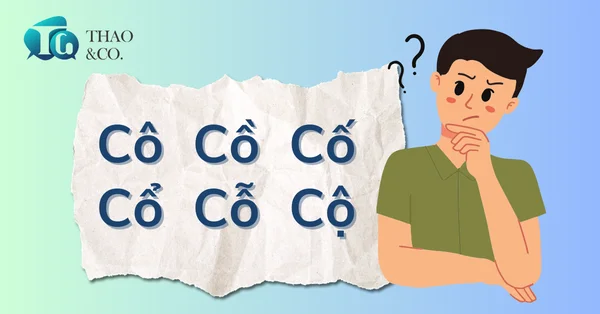
This characteristic adds to the richness and uniqueness of the Vietnamese language. However, the uniqueness of tone can lead to confusion in Vietnamese translation, especially in interpretation. Hence, when translating Vietnamese language, native linguists play a crucial role in producing the most accurate and high-quality translations.
Besides, when translating works of art, tone is the most important factor that translators need to pay attention to. Tone, extending beyond mere intonation in sentences, embodies the author’s artistic essence. Without meticulous attention to selecting appropriate expressions, the translation risks losing a unique facet of the Vietnamese language’s beauty.
In terms of word origins, Vietnamese comprises three primary categories: native Vietnamese words from the ancient Mon-Khmer language family, Sino-Vietnamese words derived from Chinese and adapted to Vietnamese pronunciation, and loanwords from English and French to represent concepts unique to those languages.
A study by the Max Planck Institute revealed that approximately 28.1% of the 1,477 commonly used Vietnamese words are borrowed vocabulary. More specifically, 25.3% of the loanwords originate from Chinese, 1.2% from French, 0.5% from the Proto-Tai language, 0.3% from English, 0.3% from Indian languages, 0.2% from Cantonese, and 0.2% from the Cham language.
This study highlights the Vietnamese language’s resilience, demonstrating that it preserves its “nation’s soul and spirit” while seamlessly incorporating loanwords. The language’s continuous process of borrowing and adapting words enriches its beauty and reflects its dynamic nature.
A fundamental characteristic of a language is its ability to thrive and flourish in everyday life. Therefore, language serves as a mirror to the diverse lifestyles and cultural practices of different regions. Vietnamese is no exception.
There are three main dialect groups in Vietnamese: Northern, Central, and Southern dialects. These dialects exhibit unique vocabulary and pronunciation patterns, embodying the distinct cultural heritage, historical influences, and geographical features of their respective regions. It is true to say that Vietnamese is enriched, in part, due to these dialect systems derived from thousands of generations of Vietnamese people.
When it comes to dialects, the most noticeable sign is undoubtedly the distinctive “intonation” of each dialect, each region maintained through many generations. The Northern dialect clearly distinguishes between the low rising tone and the low rising-broken tone, while people in the Southern region pronounce words quite quickly without differentiating between the two. The “intonation” of the Central dialect is even more distinctive and is considered thick and heavy.
Dialects contribute to the beauty of Vietnamese but also form a formidable “wall” that Vietnamese translation must overcome to successfully “decode” and “encode” that beauty. Dialects are created by the diversity of vocabulary and pronunciation. Therefore, Vietnamese translators and interpeters must be seasoned linguists with a deep understanding of dialects and local cultures to produce the highest quality translations.
Function words are widely used in Vietnamese and are considered a basic grammatical element. Function words are defined as words that do not have an identifying function, cannot independently function as sentence components, and are used to express grammatical relationships between lexical words, making them different from lexical words. According to Hoang Phe, “Đã, đang, sẽ” are examples of function words.
The system of function words in Vietnamese is very diverse and is divided into two main groups: syntactic function words and grammatical function words.
Thus, it can be seen that function words in a sentence do not perform identifying functions and do not take on the main grammatical functions. However, this type of word is commonly used in Vietnamese to express emotional meaning in sentences. Function words, combined with word order, help Vietnamese people create many sentence structures with the same basic content but with different expressive nuances.
By “deciphering” each layer of the Vietnamese language construction, the richness of this language gradually becomes apparent. This richness of beauty is created by flexible grammar, a rich vocabulary system with a unique lexicon of borrowed words, diverse dialects, distinctive tones, and distinct function words. Therefore, Vietnamese is considered a highly expressive language.
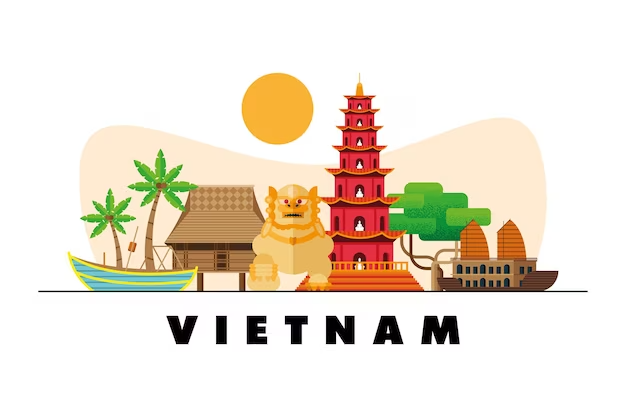
When “deciphering” each layer of Vietnamese, it becomes evident that complexity and diversity are essential factors contributing to the richness and beauty of Vietnamese. However, in Vietnamese translation, these characteristics pose significant challenges.
Linguist Nguyen Van Chien stated that the pronoun system in Vietnamese is a phenomenon that causes many complications for translators when converting other languages into Vietnamese.
This characteristic of Vietnamese often hinders translators because they don’t know how to express this uniqueness in the target language. The pronominal system in Vietnamese clearly shows the relationships between subjects. Meanwhile, this distinction in English is sometimes ambiguous.
For example, the pronouns “chúng ta” and “chúng tôi” in Vietnamese are both translated as “we” in English. However, “chúng ta” and “chúng tôi” are not entirely the same in meaning. “Chúng ta” is a pronoun that includes both the speaker and the listener present in the conversation. On the other hand, “chúng tôi” is only used to refer to the speaker and those who perform the same action as the speaker.
Another example is the word “uncle” in English, it encompasses the meaning of several pronouns in Vietnamese: bác, chú, cậu, and dượng. In fact, bác, chú, cậu, and dượng are used by Vietnamese people to differentiate and express deeper hierarchical relationships within the family.
With just two small examples, the significant differences in the pronominal system in Vietnamese and English are evident. This complex pronominal system is a unique feature of the Vietnamese language that not many other languages possess. Therefore, to be well-versed in Vietnamese pronouns, translators need an extensive understanding of the culture and society of this country. Only then can the message of the original text be accurately and wholly translated.
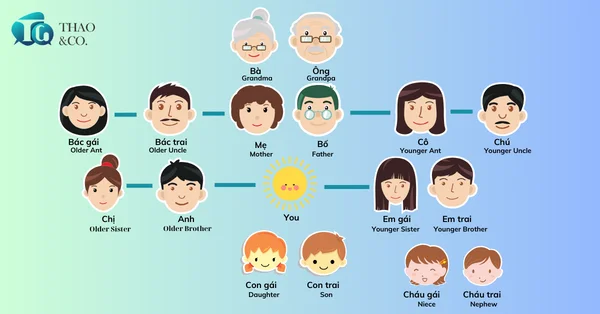
Vietnamese function words are diverse and rich, bringing flexibility to communication. Vietnamese people can use function words unconsciously to convey information, but this does not mean that function words are not essential. They add layers and meanings to information.
It can be observed that, although function words do not take on main functions in a sentence, their role in expression is crucial for Vietnamese. In contrast, in the English or French language systems, the number of function words is not as extensive.
This makes Vietnamese translation even more challenging because not every function word in Vietnamese can be translated into an equivalent function word in the target language. In such cases, translators ought to be creative and flexible in translation to provide a translation that is as meaningful and equivalent as possible to the original.
The system of loanwords in Vietnamese has been formed and developed over thousands of years throughout history. Loanwords seem to have become an indispensable part of the Vietnamese language, used very often by the Vietnamese people to the point where it is difficult to distinguish between native Vietnamese words and loanwords.
However, native Vietnamese words and loanwords can be distinguished through their expressive nuances. Accordingly, loanwords, such as Sino-Vietnamese words, often carry a formal and polite tone. In contrast, native Vietnamese words carry a sense of simplicity and familiarity to everyday life.
Vietnamese people decide to use either native Vietnamese or loanwords based on the communication context. For example, in texts such as modern novels and short stories, especially in everyday communication, the majority of vocabulary used is native Vietnamese. On the other hand, for scientific, political, economic, and legal texts, Sino-Vietnamese loanwords are typically preferred.
Therefore, when translating into Vietnamese, choosing the appropriate vocabulary is a considerable challenge because it depends a lot on the cultural context of the text.
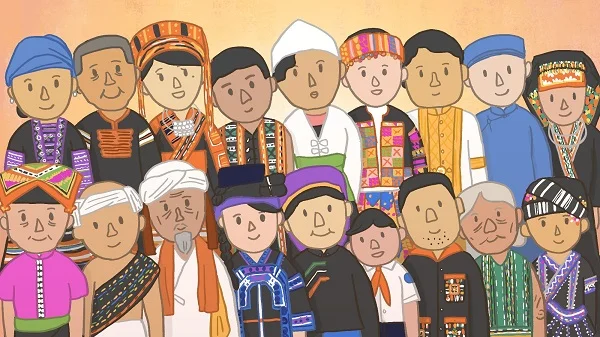
A diverse lexicon and infinite combination of syntax are not the only colors on the linguistic canvas of Vietnam. The masterstroke lies in arranging the distinct characteristics and proud history of 54 communities, all bound in kinship, into a harmonious color composition.
Each ethnic group brings to the palette its own shade of language, tradition, architecture, costume, and art style. The legacy of triumphs and turbulences only serves to enrich the tapestry that is the Vietnamese language. Therefore, succeeding in their role as the linguistic middleman requires Vietnamese translators to equip themselves with an in-depth understanding of Vietnam culture values, and traditions.
Vietnam is in the process of comprehensive, extensive, and flexible international integration. Therefore, the demand for Vietnamese translation is currently high in all fields.
In recent years, Vietnam has gradually asserted its position in the international arena, attracting global businesses to invest in its economy. Currently, about 12,000 FDI firms are operating in Vietnam. These businesses not only establish manufacturing plants in the country but also penetrate the market with their products.
To operate in Vietnam, international businesses must complete mandatory legal procedures such as business registration, investment registration, tax registration, Vietnam work permit application and related licenses. Completing legal paperwork always requires absolute accuracy in the information contained in the documents. Therefore, Vietnamese translation is the key to helping foreign businesses operating in Vietnam complete the legal documents properly.
The Vietnamese entertainment industry is witnessing impressive growth. The success of certain television gameshows, motion pictures, and global music products demonstrates that the Vietnamese entertainment sector is approaching the international market.
For instance, the song “Hai phút hơn” by the female rapper Pháo made it to the Top 12 World Digital Song Sales on the prestigious Billboard chart. Similarly, the song “Bigcityboi” by the male rapper Binz was featured in the blockbuster Hollywood film “The Expend4bles 4.”
Despite achieving certain successes in the international market, to reach a broader global audience, Vietnamese entertainment companies need to undertake more extensive promotional campaigns to unlock new markets. Promotional and marketing campaigns always require creativity, as well as appropriate content localization strategy to align with the target culture. Therefore, Vietnamese translation in the field of entertainment holds a significant position.
Moreover, Vietnam is an attractive market that captures the attention of leading global entertainment industries in the US, UK, South Korea, China, and Japan. In recent years, many Korean films have incorporated details and settings related to Vietnam.
In early 2023, the film “Taxi Driver” featured prominent Vietnamese landmarks, including the Dragon Bridge in Da Nang City, Ha Long Bay in Quang Ninh Province, Thuy Tien Lake Water Park in Hue, and Notre-Dame Cathedral Basilica of Saigon in Ho Chi Minh City. The inclusion of Korean actors wearing traditional “áo dài” and speaking Vietnamese was well-received by the local audience, contributing to the film’s impressive viewership on the Netflix platform.
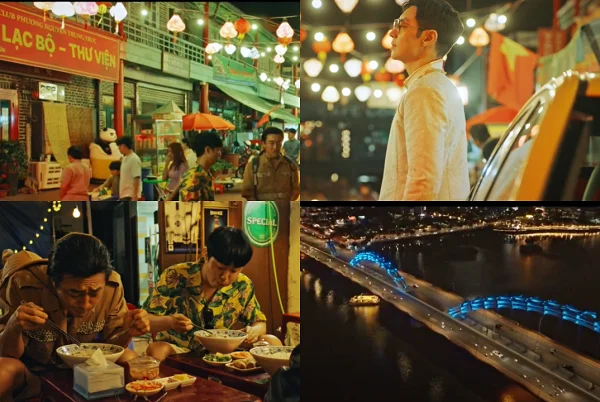
This is a testament to the increasing demand for Vietnamese subtitling and dubbing services in the upcoming period. Professional Vietnamese translation agencies now have the opportunity to rapidly develop to meet the timely demands of the market.
Vietnam is a country that consistently embraces new investment trends in the technology sector from leading global corporations such as Samsung and prominent U.S. technology conglomerates in Silicon Valley, including Nvidia, Meta, and Synopsys. The investments made by these top global technology corporations in Vietnam are rapidly expanding the domestic market.
This entails technology transfer activities and technology solutions transfer between relevant parties. Vietnamese translation becomes the optimal solution for businesses to accurately translate technical documents and specialized materials.
When businesses aim to penetrate and operate successfully in Vietnam, marketing activities become essential. This has led to an increasing demand for translation of marketing materials such as:
Marketing and advertising translation requires high focus during the translation process to create content that is culturally appropriate for the Vietnamese audience while ensuring the brand’s message is faithfully conveyed. This presents a challenge in translation, making it crucial to choose a reputable Vietnamese translation agency with experience in similar projects. With such a choice, the marketing campaigns of the brand can achieve the best results.
Vietnam is one of the top destinations for international tourists, possessing unique and attractive tourism resources.
The country boasts a colorful cultural tapestry, magnificent natural landscapes, unique architectural structures, and, notably, a strong connection between tangible and intangible cultural heritage.
International tourists are captivated by the ancient charm of Hoi An Ancient Town, immersed in the melodies of Hue’s Royal Court Music, and amazed by the natural beauty of Ha Long Bay. This is evidenced by the fact that, in just the first 7 months of 2023, the number of international tourists visiting Vietnam exceeded 6.6 million.
The potential for the development of tourism industry in Vietnam is significant, as the country focuses on restructuring the tourism market, developing collaborations, and promoting tourism through various mass media. The UNESCO representative in Vietnam once stated that “It’s hard to think of a country which does more to support and promote its cultural heritage than Vietnam”.
To reach such proud achievements, Vietnamese translation plays a considerable role in the tourism promotion of the country. As the Vietnamese tourism industry continues to grow, the demand for Vietnamese translation in this field also steadily increases.
A translation project encompasses various related factors, making the rate of Vietnamese translation not fixed and likely to change depending on each project and translation agency. Here are some factors directly affecting the cost of translation:
The rate of Vietnamese translation largely depends on the project as well as the translation agency. Therefore, to accurately determine the cost one needs to pay, clients should discuss detailed information about their translation requirements and additional services with the translation agency. This not only enhances the quality of the translation but also helps clients avoid incurring unnecessary costs.
Before initiating a translation project, as a professional translation company, Thao & Co. always provides clients with a detailed quote. Hence, you can rest assured of the quality and pricing of translation services at Thao & Co.
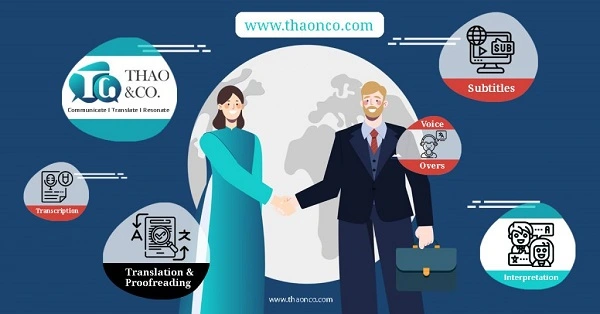
Vietnamese translation plays a crucial role for businesses looking to expand their market strategies into Vietnam. Hence, choosing a professional and quality Vietnamese translation company for collaboration is highly necessary.
A quality Vietnamese translation agency meets strict requirements regarding the quality of translators, processes, translation technology, and experience in executing similar projects. So, where can you find a quality Vietnamese translation agency?
At Thao & Co., we commit to delivering clients high-quality translations performed by native, highly specialized, and experienced translators, backed by a streamlined working process, utilizing modern technology. Thao & Co.’s translation services are executed with strict confidentiality policies to ensure clients experience the highest quality of service.
App & Website Content Localization
To experience professional Vietnamese language translation services from Thao & Co., please visit our Get a Quote page or go to Thaonco.com for detailed information!